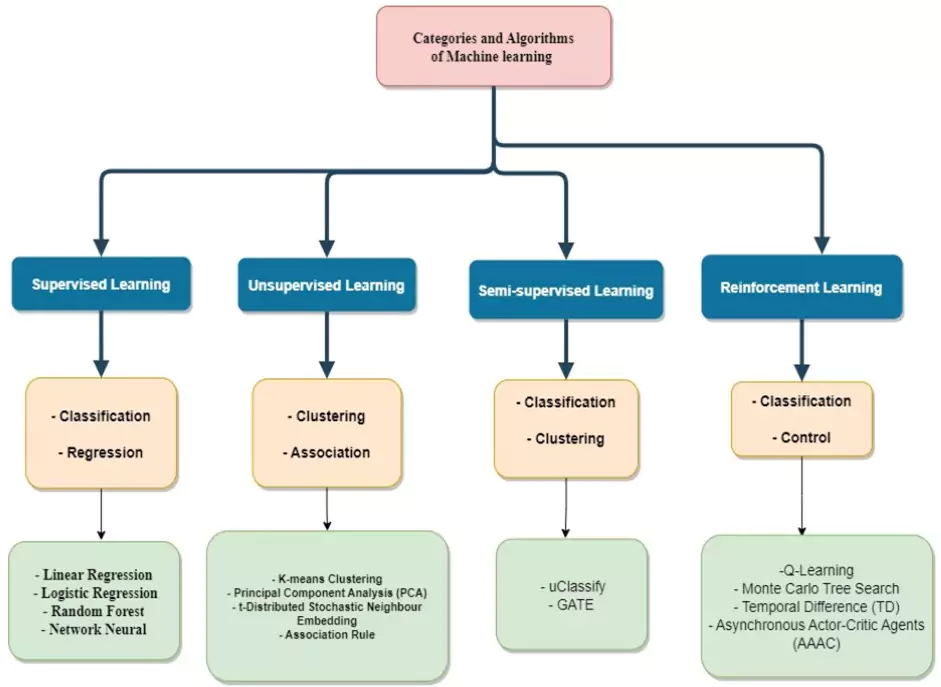
How Machine Learning Works Step by Step?
- Posted by 3.0 University
- Categories Machine Learning
- Date March 26, 2025
- Comments 0 comment
Here, let’s discover the answer to the question: “What is machine learning?”
These days, we simply cannot ignore machine learning in our digital world; it permeates everything.
It’s a branch of artificial intelligence where algorithms let computers learn from data without needing someone to spell out every step.
There are a few flavours of it too; generally speaking, you’ve got supervised, unsupervised, and reinforcement learning, each handling problems in their own quirky way.
Think about supervised learning: it’s used in things like email filters or catching fraud, where you already have a number of labelled examples to work with.
Unsupervised learning is a useful tool for segmenting customer data by identifying hidden patterns in unlabelled sets.
When you look at the whole process—from grabbing raw data, cleaning it up a bit, training a model, then checking its performance—you see why having a step-by-step approach matters.
A diagram showing various machine learning algorithms even ties these ideas together, highlighting how the different methods overlap and support each other in practice.
Types of Machine Learning
Machine learning comes in many flavours, each built for a specific job with its set of methods.
Supervised learning, for example, trains algorithms on pre‐labelled data so they can predict outcomes from the given features.
Unsurprisingly, unsupervised learning digs into unlabelled data to uncover hidden patterns—which is key for grouping data when labels aren’t already assigned.
Then there’s semi-supervised learning, blending a small bit of labelled data with a larger batch of unlabelled information to bump up accuracy in most cases.
Reinforcement learning employs a hands-on, trial-and-error methodology, rewarding or penalizing actions based on their performance in an environment.
This mix of methods shows how each technique operates and highlights their broad applications, as seen in that diagram of machine learning types.
Understanding these differences is crucial for understanding the detailed operation of these systems.
Algorithm Type | Recall (%) | Precision (%) | F Score (%) |
Random Forests | 84 | 91 | 88 |
Support Vector Machines | 77 | 87 | 82 |
Neural Networks | 76 | 86 | 80 |
Maximum Entropy | 75 | 86 | 80 |
Bootstrap Aggregation | 75 | 86 | 80 |
Generalized Linear Models | 69 | 82 | 75 |
Supervised Linear Discriminant Analysis | 67 | 81 | 74 |
Decision Trees | 51 | 70 | 59 |
Logistic Boosting | 45 | 64 | 53 |
Performance Metrics of Machine Learning Algorithms in Public Health Expenditure Classification
Steps Involved in Machine Learning
The predominant end credible question is How Does Machine Learning Work.Machine learning works best when every step is clear.
Data collection kicks things off—you pull together various datasets from multiple sources, which generally sets a solid foundation by ensuring quality and relevance for the task at hand.
Next, the raw data gets thorough cleaning and a bit of reshaping, turning messy inputs into something more workable for later analysis. Thereafter, you often dive into the process of picking out key features and even tweaking them so the model can better notice hidden patterns.
Then comes the important part of choosing an algorithm; here, in most cases, you might pick a different technique depending on whether you’re doing supervised, unsupervised, or reinforcement learning.
What follows is training the model on the cleaned-up data, checking its performance carefully, and then refining the process over and over until you’re satisfied with the results.
A visual summary, as depicted in the image, shows these different steps layered together, which helps deepen the overall understanding of machine learning’s systematic approach.
There’s a brief representation of Machine Learning steps below:
No. | Step Name | Description | |
1 | Data Collection | Gathering relevant data from various sources to form the foundation for analysis. | |
2 | Data Preparation | Cleaning and organizing data to ensure quality and consistency. | |
3 | Feature Engineering | Selecting and transforming variables to improve model performance. | |
4 | Model Selection | Choosing appropriate algorithms based on the problem and data characteristics. | |
5 | Model Training | Applying algorithms to training data to learn patterns. | |
6 | Model Evaluation | Assessing model performance using metrics like accuracy, precision, and recall. | |
7 | Model Tuning | Optimizing model parameters to enhance performance. | |
8 | Model Deployment | Implementing the model in a real-world environment for practical use. | |
Steps Involved in Machine Learning
Future of Machine Learning Careers in 2025
Technology continues to change, and by 2025 the career scene in machine learning is set to look completely unique jobs will shift in what skills and experience they demand.
Soon enough, pros in this field might see themselves dabbling not only in pure algorithms but also in work across healthcare, finance, and even autonomous tech, blending ideas in unexpected ways.
With everything getting more complex, it’s not enough to just know your basics; generally speaking, a solid ride through classic models has to be paired with insight into ethical issues and practical data management.
Everyday routines incorporate deep learning, reinforcement learning, and other modern methods, making it essential to stay updated through ongoing learning.
Often, budding machine learning experts will need to be both technically sharp and good at teaming up with others, tackling problems as they arise—even if that means sometimes rethinking the old playbook.
This holds true in workplaces that lean on diverse groups to crack challenging puzzles in our fast-changing digital world, as seen in the image.

The chart demonstrates tendencies and projections for AI/ML jobs, including global job projections of 97 million by 2025, a 31.4% increase in U.S. job growth by 2030, a 59% rise in AI job postings in 2024, and a 47% average salary increase for professionals with AI skills.
This data emphasizes the growing demand for expertise in the AI field.
Conclusion
To wrap it up, machine learning unfolds as a curious mix of layered processes and real-world effects that reach far across many sectors.
By delving into intricate details, such as obtaining raw data, cleansing it, training models, and testing them, individuals can truly unlock their untapped potential.
In general, both tech enthusiasts and serious researchers have realized the importance of staying up to date with new trends, constantly learning, and adapting to changing circumstances.
There’s even a diagram presented in that kind of lays out a broad range of algorithms and types while hinting at how they sometimes mix in unexpected ways.
This visual below depicts the categories of machine learning algorithms, with utmost profundity with unique features, serves as a reminder that determining the most suitable method for a given challenge is not always straightforward and may require a thorough examination of their interrelationships.
Ultimately, as machine learning evolves, so do the opportunities it brings—shaping careers, industries, and our futures well into 2025 and beyond.

Image1. Categories and Algorithms of Machine Learning
You may also like

What is Identity Security in Cloud Computing?
Machine Learning Tool and Library
Indeed! Time to go on board a journey through the world of machine learning, where we’ll uncover the secrets of its tools, navigate the library landscape, and ponder the ethical puzzles of AI. Machine Learning Made Easy: Top Tools & …
Key Insights on Machine Learning
Let’s explore the multifaceted realm of machine learning. This article ventures into the intricacies of algorithms, interpretability, and application-specific recommendations, providing a pragmatic lens to view the future of intelligent systems. Building on our previous article that covered the fundamentals …
